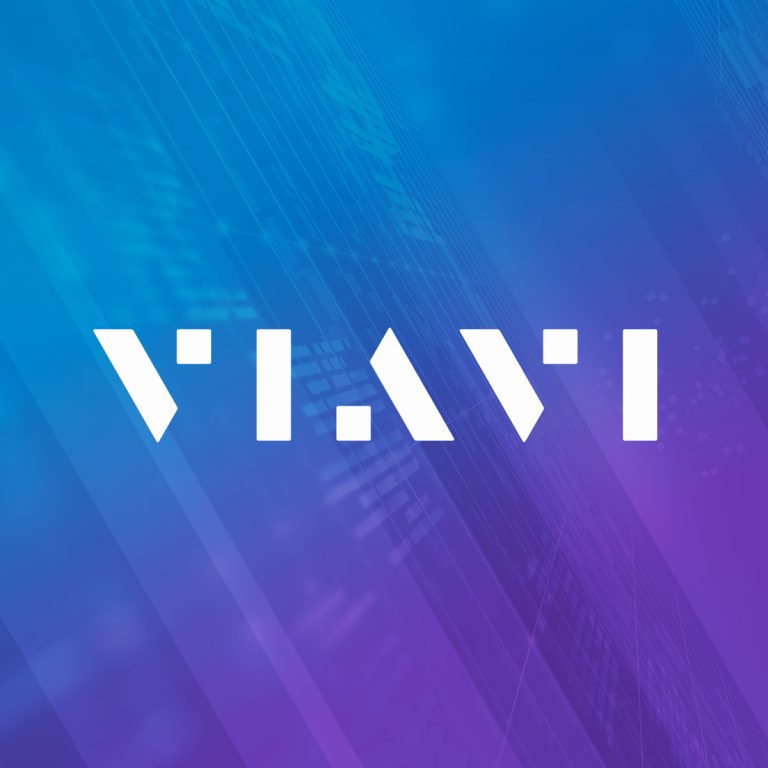We had the opportunity to converse with Mr. Matthew Zahra, who serves as the Senior Regional Product Manager APAC at VIAVI Solutions


Can you provide a brief overview of your organization’s involvement in the fiber industry and its contributions to advancing connectivity in the APAC region?
Viavi Solutions is a global provider of network test, monitoring, and assurance solutions to telecommunications network operators, NEMS, service providers, enterprises, and their ecosystems. Viavi has been partnering with industry players in the APAC region to provide them with multi-dimensional visibility, intelligence, and insight of their networks – allowing them to get the most from their investments. Our key contribution to advance connectivity in the APAC is with the continuous transitioning to new technologies, such as copper to Fiber PON FTTx and now 10GPON networks and the services on top. Another advancement we contributed towards is the improvement to network SLAs, we all know what happens when a network goes down! So, by providing the right test tools to build, maintain and monitor a network, we’ve enabled many operators to act fast when something happens, finding & fixing problems in the shortest timeframe, and getting the job done right the first time.
As an industry innovator, could you share a recent example of a fiber technology advancement or solution your company has developed that has had a significant impact on the market?
With over 2,500 patents and 1.6 million instruments in use, we are the no.1 in test and measurement industry across lab and production, fiber, metro transport, and 5G. VIAVI has a 100-year history of making the complex simple by building intelligence (and our experience) into our products. We have recently launched a new suite of fiber test and certification capabilities under the FiberComplete Pro™ banner. FiberComplete Pro™ enables field technicians to rapidly, reliably and cost effectively certify and troubleshoot any fiber link. Streamlined workflow coupled with a single test port connection and a single key press maximizes process efficiency and revenue. This is highly beneficial, to manage all the required acceptance testing measurements, especially with bi-directional tests, or automatically sequencing tests for high fiber count cables.
From your perspective, where do you see the current state of the fiber industry in the APAC region? What trends or developments are shaping its growth and evolution?
The fiber industry in the APAC region has been experiencing significant growth and evolution, driven by several key trends and developments:
- Rapid Deployment of Fiber Networks: Countries across the APAC region, including China, Singapore, Malaysia, Australia, Philippines and India, have been aggressively deploying fiber optic infrastructure to meet the growing demand for high-speed broadband services. This trend is fueled by, increasing internet penetration, rising data consumption, Hyperscaler’s cloud computing, AI and government initiatives to bridge the digital divide and stimulate economic growth.
- 5G Rollout: The deployment of 5G networks is driving demand for fiber backhaul infrastructure to support the high data rates and low latency requirements of 5G services. As 5G adoption accelerates in the APAC region, telecommunications operators are investing in fiber optic networks to ensure robust and reliable connectivity for their 5G deployments.
- Smart Cities, IoT & AI: Governments and municipalities in the APAC region are investing in smart city initiatives and Internet of Things (IoT) deployments to enhance urban infrastructure, improve public services, and promote sustainability. Fiber optic networks serve as the backbone for smart city solutions, enabling the seamless integration of IoT devices, sensors, and data analytics platforms. This coupled with AI, has now further boosted the need for more optical connectivity.
- Submarine Cable Investments: The APAC region is home to some of the world’s busiest maritime trade routes and populous coastal cities, driving demand for submarine cable connectivity to support international data traffic. As a result, there has been significant investment in submarine cable projects linking the APAC region with other parts of the world, enhancing global connectivity and enabling digital commerce and collaboration.
Looking into the future, what exciting opportunities or challenges do you foresee for the fiber industry in the APAC region over the next 5-10 years?
Looking into the future, we see some exciting growth opportunities such as further expansion of the Gigabit broadband, again driven by AI, IoT and cloud computing; these are all bandwidth-intensive applications and services. These technologies will drive further digital transformation across various other sectors such as healthcare, education, finance and commerce; taking us deeper into the fourth industrial revolution. There is also the wireless network evolution and densification that will come into play with evolved 5G and 6G networks which is already in the early stages of R&D, all of these technologies are already and will become more fiber optic hungry.
The major challenge I note and hear about from industry players is ROI. With such rapid advancements and huge investments and undertakings, it is becoming increasingly hard for operators to keep up with the capital costs for such infrastructure investments and hence why we keep investing in new automated and intelligent feature rich solutions, to keep the optimum productivity levels and efficiencies for our customers.
In terms of infrastructure development and deployment, what unique insights does your organization bring to the table that contribute to the success of fiber networks in the diverse APAC landscape?
I’ll take use PON Networks as a real example. What we’ve observed is that inadequate testing procedures or incorrect testing methods, along with other factors related to the traditional PON deployment approach—such as non-sequential construction from central/local offices and out-of-sequence fiber connections—have resulted in cascading issues during customer connections. Numerous major tier-1 service providers worldwide have encountered initial installation failure rates exceeding 30% for FTTH customers. Clearly, this is alarming and unsustainable for service providers, leading to additional troubleshooting efforts, unnecessary fiber replacements, and delays in revenue generation through customer billing. Moreover, the increased number of truck rolls undermines efforts to minimize carbon footprints. To mitigate the adverse effects of poor customer installation success rates stemming from subpar PON deployment quality, VIAVI has introduced a centralized testing application tailored for PON build certification within its remote fiber test system (ONMSi).
Could you share a success story or case study that highlights how your organization’s fiber solutions have positively impacted a specific industry or community within the APAC region?
In a developing country within Southeast Asia, access to high-speed broadband internet was limited, hindering economic development, education, and healthcare services. The local telecommunications operator, in collaboration with Viavi Solutions, embarked on a project to improve their fiber optic infrastructure homes passed success rate and deliver reliable broadband connectivity to underserved communities.
The region’s infrastructure presented logistical challenges for fiber deployment. Additionally, limited resources and technical expertise posed obstacles to efficient network planning, construction, and maintenance.
Viavi Solutions together with our local delivery partners approached this as a partnership and worked on a comprehensive suite of fiber testing, monitoring, and assurance solutions together with a healthy amount of knowledge sharing to support the broadband deployment project.
The resolution entailed a comprehensive 360-degree approach to guarantee that each phase was executed to the required standard. Fiber testing and certification incorporated Viavi’s principle of fiber end face connector hygiene, a practice now embraced by the majority, if not all, Tier-1 operators. Employing the IBYC (Inspect Before You Connect) methodology, technicians utilized advanced fiber inspection tools to examine swiftly and precisely and certify fiber optic connections, thereby securing the reliability and efficiency of the network infrastructure. Additionally, our PON OTDRs featuring SLM view were employed, granting technicians a rapid overview and a “birth certificate” of the network construction. Viavi together with our channel partner conducted training programs for local technicians and operators, equipping them with the knowledge and skills needed to deploy, and maintain fiber optic networks effectively.
This approach, supported by Viavi Solutions’ advanced technologies and expertise, had a transformative impact on the roll-out pace and profitability of the project. Beyond that, individuals and enterprises acquired high-speed broadband internet access, opening doors to online education, e-commerce, telecommuting, and digital innovation. Moreover, the ripple effect includes fostering positive economic expansion as such infrastructure draws investment and business prospects to the area, catalyzing economic development, job formation, and income generation for local communities.
How does your organization approach collaboration and partnerships within the fiber ecosystem to drive innovation and ensure seamless connectivity experiences for consumers and businesses?
At Viavi Solutions, we often form strategic partnerships with telecommunications operators, equipment manufacturers, technology vendors, and industry associations to collaborate on joint initiatives aimed at advancing fiber technology features and driving innovation in the ecosystem. These partnerships enable companies to leverage complementary strengths, resources, and expertise to develop integrated solutions that address market needs more effectively.
Given your experience, what advice would you offer to businesses and governments aiming to accelerate the adoption of fiber-optic technology in underserved or rural areas of the APAC region?
Expediting the uptake of fiber-optic technology in underprivileged or remote areas of the APAC region demands a multifaceted strategy that entails collaboration among corporations, governmental entities, and local populations. Large corporations, particularly in the hyperscaler sector, continually seek opportunities for expansion, particularly where it aligns with economic feasibility and where the necessary infrastructure for power and communication is established. Such investments stimulate economic growth in the communities they enter, underscoring the importance of having dependable infrastructure foundations in place.
As an industry leader, what role do you believe the Fiber Network Council APAC plays in fostering knowledge-sharing, networking, and collaboration among stakeholders in the fiber industry?
The Fiber Network Council APAC (FNC APAC) plays a crucial role in fostering knowledge-sharing, networking, and collaboration among stakeholders in the fiber industry across the Asia-Pacific region. As an industry association dedicated to promoting the advancement of fiber optic networks, the FNC APAC serves as a platform for telecommunications companies, equipment vendors, service providers, government agencies, and other stakeholders to come together and address common challenges, share best practices, and drive innovation in the fiber ecosystem. The FNC APAC also provides networking opportunities for industry professionals to connect, collaborate, and build relationships with peers, partners, and potential customers. Networking events such as industry forums and networking receptions allow stakeholders to exchange ideas, explore partnership opportunities, and expand their professional networks within the fiber industry.
Looking ahead to the next decade, where do you envision the fiber industry in the APAC region? How will emerging technologies and evolving market dynamics shape the landscape?
The next decade holds immense opportunities for the fiber industry in the APAC region, driven by emerging technologies, evolving market dynamics, and the growing importance of high-speed broadband connectivity in powering economic growth, innovation, and social development. By embracing these trends and leveraging the potential of fiber optic technology, stakeholders in the APAC region can accelerate the digital transformation of economies and societies, unlocking new opportunities for prosperity and progress.

